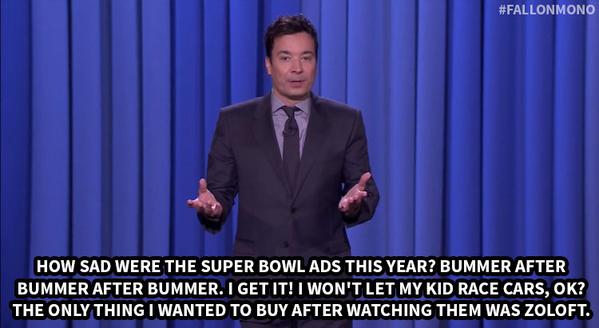
11 Feb Grab Your Tissues: Sadvertising Is Trending
Ads and other methods of communication have long utilized human emotions to create action. During the latest Super Bowl a trend in emotional communications was apparent- brands are tapping into the emotion of sadness to create action. One of the reasons it was so effective during the Super Bowl was because many fans were expecting funny ads, and experienced surprise when presented with sad ads. This change in emotional tone became a conversation point.

(Image via @FallonTonight)
Why all the sadness?
This practice of sad communications has been coined “sadvertising,” and you’re probably going to see a lot more of it. It is said that sad emotional content has the capacity to make people feel more emotionally connected to one another, especially powerful in our detached digital world. This sad connectedness makes people more likely to take an action such as sharing content, donating money, or buying a product.
Communicating sadness can create behavioral change
Scientifically speaking, when we hear interesting stories, specifically stories that make us feel distress or empathy, our brain produces two chemicals: cortisol, which links with our sense of distress and helps us focus our attention on something, and oxytocin, which is associated with our sense of empathy. When these two chemicals are triggered, studies show that people are more likely to give money to a cause related to the story they’ve heard.
Watch this video to learn more about this study:
In short, the study reveals that it is possible for a story to change a person’s behavior by changing their brain chemistry.
What does this mean for brands? Sad stories have the potential to move people to make a purchase. This is why we’ll likely see more of these sad ads in the future.
Do you need help identifying emotional triggers for your target audience to create change? Contact BRG Communications today!






